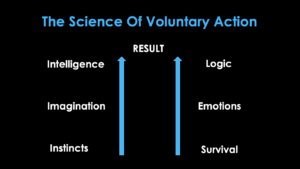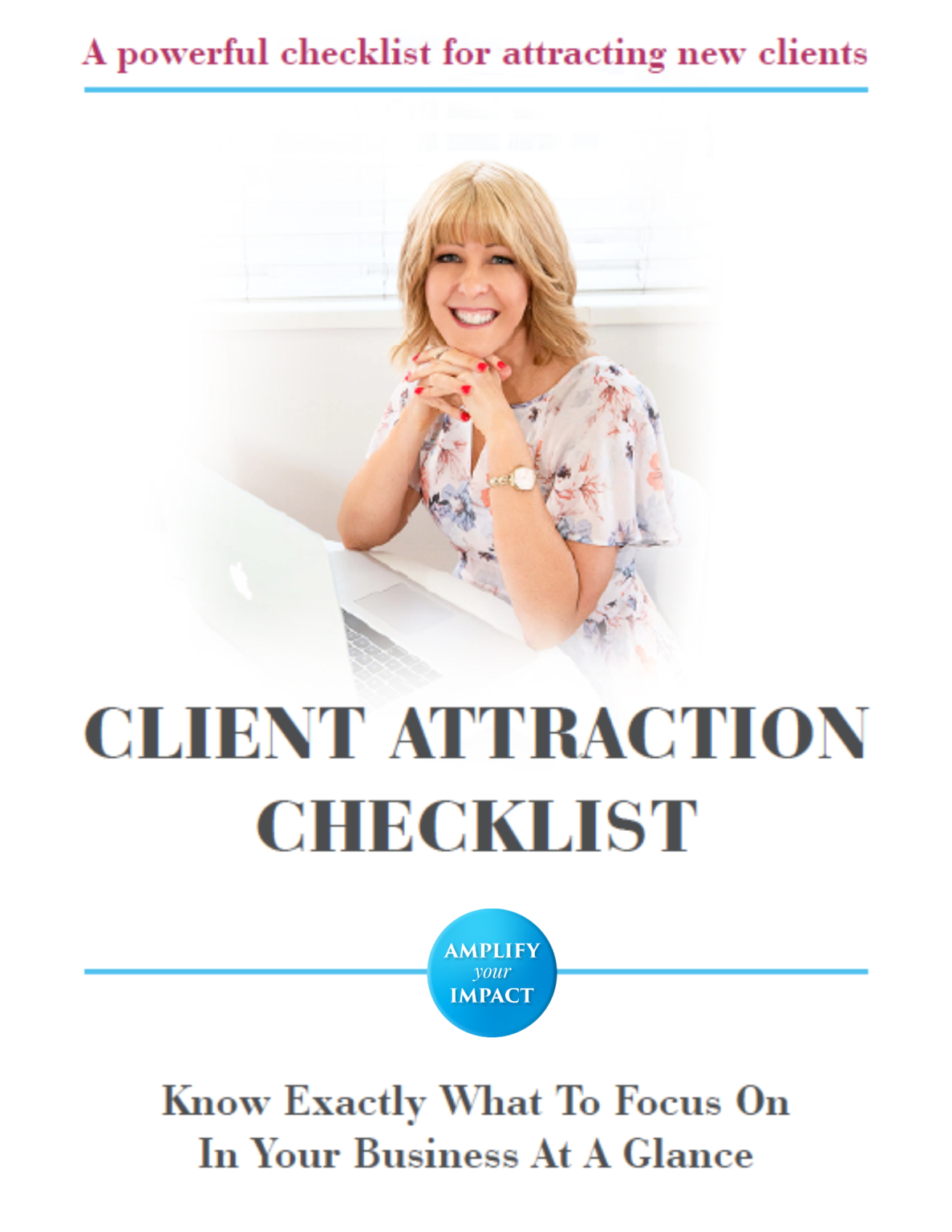Have you noticed that what influences us and gets us to buy has changed significantly over the past few years?
How about the past 6-12 months?
The answer is, absolutely, definitely yes it has.
The situation we find ourselves in now with lockdowns and business shutdowns really has rewritten the rules of what grabs our attention and influences us to take action.
Given all the noise, complexity, and uncertainty that we’re dealing with in these times, where everyone has had to go online to help their business survive, have you stopped to think about what makes someone influential?
As business owners, our job is to influence people to take action to improve the quality of their lives. I’ve spent so much of my career specifically researching exactly how to influence others.
So what exactly does influence look like for you as a business owner? How do you develop it? How do you use it to accelerate your business?
In this article, I share some of the secrets I’ve discovered from my quest to answer these important questions, and what has shifted in recent times.
So, how can you become more influential? Here are three ways…
1. Be The Interpreter Of Your Audience’s Journey
Because of the fast pace of information coming at us, it’s more important than ever to have clarity about what result we help people get, and what makes us unique.
Back in the day, you could be the expert on something broad. 10 years ago, you could write an eBook, and people would actually read it. Now, most people aren’t going to read your eBook.
Most people are not going to read every page on your website, they’re not going to read every email you send them. There’s way too much noise out there. Now if you want to get and keep people’s attention, you have to be specific.
Just do a little mental check right now. Think about your website, your social media profiles, your comments that you put on Facebook, and everywhere that you show up online.
Are you speaking very specifically to your ideal clients, or are you trying to be everything to everyone?

In order to be influential, you need to be able to clearly communicate your message.
You need to have clarity. Clarity about what you do, and clarity for why you’re unique. When I come across you, I want to feel like you’re speaking to me specifically. In order to be influential, you need to be able to clearly communicate your message.
You don’t have to be super crazy, different, and weird to stand out, you just need to be yourself.
I remember I used to always try and be super professional and always have this business persona. In any business scenario where I went to business events, I would try to be this super corporate type person, which was not me at all.
I hadn’t worked in corporate since 2004, but I was trying to fit into this corporate world that was just was so not me. It’s a journey to peel back the layers, and actually be more of who you actually are. What influences people the most is when you can just be yourself.
I have 3 questions for you when it comes to communicating a clear message:
- What do you have deep mastery in?
- What language do you know better than anybody else?
- What journey can you hold someone’s hand and walk them through?
Give yourself full permission to make an imperfect decision about what you want to be known for.
As Brene Brown says, “Clear is kind”.
We are hungry for people who speak our language, we are hungry for people to interpret the world for us. That’s the power of getting clear in your message.

Clear is kind. – Brene Brown
There’s some research that now shows that 50% of our decisions about someone now happens before we even meet them. So, most people that we meet now, we’ve already gone and googled them.
If you googled your name right now, how happy would you be with what actually came back? On a scale of 1-10?
Because if people are looking you up before they actually start working with you, you want to make sure that your online presence is very visible. It needs to be fresh, relevant, and clear.
We have no shortage of information. Your clients and your target market don’t have an information gap. They have more information than they could possibly know what to do with. What they need is an interpreter to stand in the gap.
I’m constantly amazed when I see people’s websites and their last blog update was two years ago. Your website is like your storefront. You need to regularly freshen it up.
You have figured out your journey… and now you’re here to interpret for others. We do this by becoming the interpreter of the world to our target market.
We don’t need more information. We need a more digestible step-by-step interpretation of what we most need to know to take our next steps.
2. Develop A Question Antenna
Number two is to develop a relevant question antenna. A relevant question antenna keeps your eyes and ears open for what your ideal clients are asking and then answering them.
We need to become fully fluent in the questions and language of our ideal clients. Then we need to be showing up and answering them.
Find out what questions your ideal client is asking in their own mind. How am I going to solve this? How do I do it? What do I do? You know, we’re always asking ourselves questions.
Keep your ears and eyes open so that you can become fluent in their language and questions of your ideal clients and then show up and answer those questions consistently. This is how you become influential.
My content is based on relevant questions my ideal clients have. I keep a list of questions and then I answer them. What I recommend is keeping a questions bank, like a piggy bank that you put questions. You can do this in a Google Doc, or in Evernote or OneNote.

Keep a ‘questions bank’ … like a piggy bank of questions that your ideal clients are asking that you can answer.
Keep a record of what questions people are asking in Facebook groups. I’m sure you’re in multiple Facebook groups. You can also Google questions that people ask in the areas of your expertise. You can look at comments on YouTube videos relating to your expertise.
Keep a list and then share the answers to them in your emails, your social media posts, in your Facebook Live videos, in your sales scripts, and in your workshops.
If you want to be influential, you want to be fluent in the questions your target market has about the journey you can help them navigate, so start collecting questions.
3. Have An ‘Above And Beyond’ Mindset
If you want to become influential you need to have an above and beyond mindset that says, “I will add more value than anybody else in my space.”
I’ve observed over the past 18 years as I’ve been going to business events, that the people who are truly influential are the ones who have an above and beyond mindset.
It’s like they have a mantra that’s infused in their mind and that they live by the mantra that says they will go above and beyond anyone else in their space.
They want to contribute to someone else’s journey. They’ve walked all the mountains and valleys and they have lessons to share from their own journey. They want to add value and help people by becoming the best interpreter of the journey that they’ve navigated.
A good interpreter has walked in your shoes before and they have created digestible knowledge that’s useful. A good interpreter uses your language and creates content for you in easy-to-digest bites.

A good interpreter has walked in your shoes before and they have created digestible knowledge that’s useful.
When I first started out in business, I was so confused. I had no idea where to start when it came to creating a website, creating email automation sequences, or how to set up a landing page. I didn’t know how to make it all fit together, how to integrate my payment gateways – all the many things we need to learn.
The business world can be so confusing. This is why I love helping my clients with their business because I figured out all the answers to all these hundreds and hundreds of questions that I had myself.
I asked my mentors and business coaches who I was being taught by and I invested in their courses. I’ve taken what I’ve learned and created my own method. I’ve used my methods myself and made sure that they worked. And now I teach it to my clients.
My method is a very step-by-step method of only the things that you need. And I have left out the fluff because I was coming across a lot of programs that had way too much fluff.
I heard an incredible talk by Julie Masters at the recent ‘HerBusiness’ event and what she said impacted me so deeply. She said that the future belongs to those who out-contribute and not out-interrupt their target market.
Julie said that in business there are tactics that people try to use: You can try to out-interrupt your competition. The thought here is that you interrupt people often enough so that they buy from you.
She said you can try to out-spend your competitors and spend more than anybody else to interrupt your target clients more often than anybody else. You can try and out-shout your competition and just turn up the volume and get louder.
But we are living in an age when none of those strategies really work anymore.
What if you made a decision that said, “I will contribute more than ANYONE else in my space!”
Influence isn’t about hacking the algorithms, it’s not about finding the latest tactic, it’s not about fancy brands or logos. Influence starts by truly, deeply caring about people.
So when it comes to being an influencer, you want to think about the next level that you can go to in your influence.
Ask yourself what steps you can take. What can you execute? The future belongs to people who have the speed of execution.
It’s not about being the most knowledgeable, it’s about being willing to take action on the next thing in front of you and the next step. I want to challenge you to pick one thing and execute it.
So what is one thing you’re going to take action on to become a more influential person?
It doesn’t take years, it doesn’t take hustling. It takes focusing on the things that matter most, which is contributing at the highest level.
I’d love to help you become more influential in your space, so you can sign up more quality clients and contribute at a much greater level.
This is an invitation for coaches, consultants, and experts who already have achieved results with people and want to earn an extra $5k-$10k+/month ASAP by signing up new, quality clients.
We would work together intensively to:
1) Make your offer irresistible. I’ll help you uplevel your package for your stage in business and the stage that your ideal clients are at to create rock-solid certainty in your offer. We’ll unpack in-depth your client’s journey from point A to point B and refine your signature system. Then we map out the best ways to attract your best-fit clients.
2) Clarify your language. I’ll help you discover and craft the right language and messaging to call in the right clients. We get clarity on their existing beliefs and how to shift their beliefs to inspire them to want to take action and create results.
3) Present content that converts. We use my proven process on video or in posts and emails to attract truly ideal, quality clients. I make sure you’re following my frameworks as precisely as possible – so that you get enquiries from your content.
In order to be the best candidate to get results, you must have experience serving clients in your area of expertise and getting results, and already have a pretty clear idea of what problem you solve and who you enjoy helping the most.
You must also be willing to create content, either writing and/or being on video and sharing your thoughts about the topics you’re an expert in.
I also offer some mini packages for people who only need certain components of what I do, for example, content makeovers and messaging clarity
If you’re interested, send me a PM on Facebook and we’ll chat over Messenger to see if it’s a fit.
It would be helpful if you included the following info in your message:
- What kind of business you have or what your expertise is
- How long you’ve been in business/how much experience you have in helping people in your area of expertise
- Your current packages/offers and price points
One or two answers for each question are fine. I’ll ask if I need more information.
If you prefer, you can book in for a 15-minute call here.
I look forward to chatting with you!
Keep shining.
Kat








 Every time you say no to a difficult client, you are opening up space in your calendar, in your mind, your emotions and in your energy and your life… to bring in an amazing client to work with.
Every time you say no to a difficult client, you are opening up space in your calendar, in your mind, your emotions and in your energy and your life… to bring in an amazing client to work with. If it’s a quality client, you don’t feel drained afterward. If you’re feeling drained, then there’s some kind of leakage happening and some kind of misalignment.
If it’s a quality client, you don’t feel drained afterward. If you’re feeling drained, then there’s some kind of leakage happening and some kind of misalignment. 5 Ways To Spot Energy Zapping Clients
5 Ways To Spot Energy Zapping Clients When I talk about converting quality clients, I’m not just talking about just anyone. I’m talking about your ideal clients who are your dream clients.
When I talk about converting quality clients, I’m not just talking about just anyone. I’m talking about your ideal clients who are your dream clients. This takes the pressure off you and you become excited to tell people what you do. If you’re in business, you have to constantly be telling people about what you do. It’s so important that you know how to sell especially if you’re a coach, consultant, healer, author, speaker or practitioner, and you want to help people improve their lives.
This takes the pressure off you and you become excited to tell people what you do. If you’re in business, you have to constantly be telling people about what you do. It’s so important that you know how to sell especially if you’re a coach, consultant, healer, author, speaker or practitioner, and you want to help people improve their lives. In order to awaken that vision, you don’t just want to focus on the method of how you help people or the features of your program. You want to focus on awakening in them the best version of themselves, that may have been lying dormant in their minds for many years.
In order to awaken that vision, you don’t just want to focus on the method of how you help people or the features of your program. You want to focus on awakening in them the best version of themselves, that may have been lying dormant in their minds for many years. The cool thing about this new marketplace is that if you enjoy teaching, training, and educating people, you’re in a good position to understand how to influence somebody.
The cool thing about this new marketplace is that if you enjoy teaching, training, and educating people, you’re in a good position to understand how to influence somebody. Your time is limited, so you only want to work with quality people. If you’re working one-on-one with people, you want quality people to book into your calendar. You don’t need people wasting your time.
Your time is limited, so you only want to work with quality people. If you’re working one-on-one with people, you want quality people to book into your calendar. You don’t need people wasting your time.